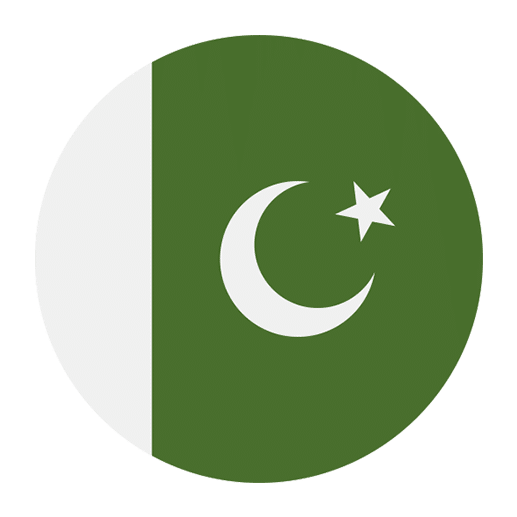Learning a new language can be both an exciting and challenging endeavor. For English speakers delving into Urdu, one of the essential skills to master is the art of forming questions. Questions are fundamental in any language as they enable conversations, facilitate learning, and help in acquiring information. In Urdu, the structure of questions is somewhat different from English, but with some practice, it can become second nature. This guide will take you through the basics of forming questions in Urdu, offering clear examples and explanations to help you on your language learning journey.
Basic Question Words in Urdu
To start forming questions in Urdu, you need to familiarize yourself with the basic question words. Here are some essential ones:
1. **What** – کیا (Kya)
2. **Who** – کون (Kaun)
3. **Where** – کہاں (Kahan)
4. **When** – کب (Kab)
5. **Why** – کیوں (Kyun)
6. **How** – کیسے (Kaise)
7. **Which** – کونسا/کونسی (Kaunsa/Kaunsi)
These words are the foundation of most questions in Urdu and are used in various contexts.
Examples:
– **What**:
– کیا ہے؟ (Kya hai?) – What is this?
– **Who**:
– کون ہے؟ (Kaun hai?) – Who is it?
– **Where**:
– کہاں ہے؟ (Kahan hai?) – Where is it?
– **When**:
– کب ہے؟ (Kab hai?) – When is it?
– **Why**:
– کیوں ہے؟ (Kyun hai?) – Why is it?
– **How**:
– کیسے ہیں؟ (Kaise hain?) – How are they?
– **Which**:
– کونسا ہے؟ (Kaunsa hai?) – Which is it?
Forming Yes/No Questions
Yes/No questions in Urdu are straightforward and often start with the word **کیا** (Kya). This is somewhat akin to adding “do” or “does” at the beginning of a question in English.
Example:
– **Statement**:
– تم جا رہے ہو۔ (Tum ja rahe ho.) – You are going.
– **Question**:
– کیا تم جا رہے ہو؟ (Kya tum ja rahe ho?) – Are you going?
You simply place **کیا** (Kya) at the beginning of the statement to turn it into a question.
Question Formation with Verbs
When forming questions with verbs, the structure in Urdu is somewhat flexible but generally follows a Subject-Object-Verb (SOV) order. Let’s break it down with some examples:
Example 1:
– **Statement**:
– وہ کتاب پڑھ رہا ہے۔ (Woh kitaab parh raha hai.) – He is reading a book.
– **Question**:
– کیا وہ کتاب پڑھ رہا ہے؟ (Kya woh kitaab parh raha hai?) – Is he reading a book?
Example 2:
– **Statement**:
– تم کھیل رہے ہو۔ (Tum khel rahe ho.) – You are playing.
– **Question**:
– کیا تم کھیل رہے ہو؟ (Kya tum khel rahe ho?) – Are you playing?
Notice how the sentence structure remains largely the same, with **کیا** (Kya) added at the beginning to indicate a question.
Wh- Questions in Urdu
Wh- questions, which begin with question words like what, who, where, etc., also follow a similar structure but do not require **کیا** (Kya) at the beginning.
Example 1:
– **Statement**:
– تم کہاں جا رہے ہو؟ (Tum kahan ja rahe ho?) – Where are you going?
Example 2:
– **Statement**:
– وہ کون ہے؟ (Woh kaun hai?) – Who is he?
In these examples, the question words **کہاں** (Kahan) and **کون** (Kaun) replace the need for **کیا** (Kya).
Tag Questions
Tag questions in Urdu are quite similar to those in English. They are added at the end of a statement to turn it into a question, often seeking confirmation.
Example:
– **Statement**:
– تم جا رہے ہو، نہیں؟ (Tum ja rahe ho, nahin?) – You are going, aren’t you?
In this example, **نہیں؟** (Nahin?) is the tag that turns the statement into a question.
Inversion Questions
Inversion questions, where the subject and verb switch places, are not as common in Urdu as they are in English. However, they can still be seen in more formal or literary contexts.
Example:
– **Statement**:
– وہ کہاں جا رہا ہے؟ (Woh kahan ja raha hai?) – Where is he going?
In this case, inversion is not applied as strictly as in English, and the sentence structure remains more straightforward.
Common Mistakes and Tips
As with any language, learning to form questions in Urdu comes with its own set of challenges. Here are some common mistakes and tips to avoid them:
1. **Forgetting to Use کیا (Kya)**:
Many beginners forget to add **کیا** (Kya) at the beginning of Yes/No questions. Always remember that this is essential for clarity.
2. **Misplacing the Question Word**:
Ensure that question words like **کون** (Kaun), **کیا** (Kya), **کیسے** (Kaise) are placed at the beginning of the question.
3. **Overcomplicating the Sentence Structure**:
Urdu tends to have a flexible sentence structure, but keeping it simple is often more effective for beginners. Stick to the Subject-Object-Verb (SOV) order until you get more comfortable.
4. **Practicing Regularly**:
Practice forming questions in different contexts. Use flashcards, language exchange partners, or even think of questions you might ask in daily conversations.
Practice Exercises
To help solidify your understanding, here are some practice exercises. Try forming questions from the given statements.
Exercise 1:
– **Statement**:
– وہ کام کر رہا ہے۔ (Woh kaam kar raha hai.) – He is working.
– **Question**:
– ______________________?
Answer:
– کیا وہ کام کر رہا ہے؟ (Kya woh kaam kar raha hai?) – Is he working?
Exercise 2:
– **Statement**:
– تم کس سے بات کر رہے ہو؟ (Tum kis se baat kar rahe ho?) – Who are you talking to?
– **Question**:
– ______________________?
Answer:
– تم کس سے بات کر رہے ہو؟ (Tum kis se baat kar rahe ho?) – Who are you talking to?
Exercise 3:
– **Statement**:
– میں کتاب پڑھ رہا ہوں۔ (Main kitaab parh raha hoon.) – I am reading a book.
– **Question**:
– ______________________?
Answer:
– کیا میں کتاب پڑھ رہا ہوں؟ (Kya main kitaab parh raha hoon?) – Am I reading a book?
Conclusion
Forming questions in Urdu is a crucial part of mastering the language. While the structure may seem different at first, with practice and regular use, it becomes much more intuitive. Remember to start with basic question words, practice forming Yes/No questions with **کیا** (Kya), and use Wh- questions appropriately. Keep practicing through exercises and real-life conversations, and you’ll find yourself becoming more comfortable and proficient in no time.
As you continue your journey in learning Urdu, don’t hesitate to reach out to native speakers, join language learning communities, and immerse yourself in the culture to gain a deeper understanding and appreciation of this beautiful language. Happy learning!

